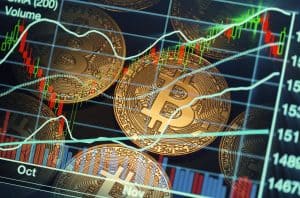 With current crypto values exceeding $2 trillion, the market for digital assets is surging and institutional interest is rapidly increasing. A new report from PwC, in partnership with the Alternative Investment Management Association (AIMA) and Finery Markets – which bills itself as the first global crypto-native multi-dealer platform – suggests that we could finally be seeing the first evidence of mainstream institutional adoption.
With current crypto values exceeding $2 trillion, the market for digital assets is surging and institutional interest is rapidly increasing. A new report from PwC, in partnership with the Alternative Investment Management Association (AIMA) and Finery Markets – which bills itself as the first global crypto-native multi-dealer platform – suggests that we could finally be seeing the first evidence of mainstream institutional adoption.
However, with numerous different digital assets to choose from and (according to Coin Market Cap) over 300 exchange platforms to trade through as of January 2022, the key question is where – given the sophisticated requirements of institutional market participants – is best to execute your trades.
“A client’s choice of digital asset execution venue may be influenced by the offering and acceptance of fiat and cryptocurrency, the reputation of the exchange in an already polarised market, and the costs associated with the transaction and the market prices that are achieved,” said PwC.
Centralised exchanges (CEXs) such as Binance (the most popular centralised execution venue among the 77 buy-side participants surveyed), Kraken and Coinbase are strong favourites, due in large part to the security and liquidity they offer, the report noted. An overwhelming majority of trading (more than 90% of participants, according to PwC) currently occurs via CEXs, which leads to lower liquidity risks and narrows the bid-ask spread for a more accessible market, but there are also downsides, including potential for hacking attacks and the perception that they are often not built to handle the scale of large transactions that institutional players are looking for
Decentralised exchanges (DEXs) are another option. These mitigate the hacking issue because they don’t exist on an exchange, so from a security perspective, the exchange of digital assets is less prone to an attack. However, a notable drawback of decentralised exchanges is their lower liquidity and the risk of market manipulation.
“The keywords here are miners extracting value, front runners and automated market-makers. In a nutshell, fluctuations in prices and execution times in the digital asset landscape allow the validators of blockchains to interfere with the orders that are made public,” explained the report.
There is also a risk that large-volume DEX orders could also face hacks, while another concern is that the emphasis on privacy and lack of transparency could make essential due diligence impossible. Around a third of participants currently trade on DEXs, according to the report, with the most frequently used platforms being Uniswap, SushiSwap and 1inch.
OTC venues are emerging as an increasingly popular alternative, as they allow investors to trade high volumes at a pre-agreed price. However, they are less efficient than exchanges – when a party submits an order, they need to wait for a counterparty to engage, which can delay execution, while the lack of a delivery versus payment mechanism means there is a risk of a party defaulting. Among the institutionals that trade with OTC desks (which accounted for around half the survey participants), the most popular counterparty is B2C2, followed by Cumberland, Genesis Trading, Galaxy digital, BlockFills and DV Chain.
Finally, smart order routing (SOR) is also gaining traction among institutional investors, using an algorithm to determine the best price for the transaction. Through a pre-determined scope of trading venues, the SOR seeks to achieve the most favourable trading condition. The method is appealing in terms of best execution because it can access several trading venues simultaneously. This means the range of digital assets traded is broader, and liquidity can be aggregated – a distinct advantage in such a fragmented landscape. However, the method is highly complex which limits take-up even among institutional players.
“When choosing an exchange, the respondents seem to place importance on execution and liquidity quality,” said the report. “The second most important factor is the assets an exchange supports. Rounding off the top three, regulation and jurisdiction reputation is the final factor in the choice of exchange.”
Interestingly, fees and commissions came in fourth place, suggesting that players are currently willing to pay more in transaction fees if the exchange has other features they want, such as a wide range of assets, best execution capabilities, and legal certainty.
In summary, institutional trading of digital assets is still in its early days and the market has yet to consolidate into any identifiable trend or preference. Almost all institutional investors use more than one platform to trade, with at least 25% using more than 10 venues. But consolidation could start to appear as volumes increase – similar to the FX market, which also used to be highly fragmented.
And the outlook is promising. The report found that almost 70% of the companies that have traditionally traded in financial instruments are now engaging in trade in the digital asset landscape, marking a positive long-term trend. “This shift of traditional finance companies making the transition into digital assets could be the start of mainstream adoption of digital asset by financial institutions,” noted PwC.
Volumes are still low – the highest number of respondents trade less than $10 million a month in digital assets. But these too are growing. “Even though there are a greater number of companies that trade less volume, the volumes of institutionals that trade more than $10 million are much greater in total,” found the survey. “A bullish market may lead to more institutional entries to the market and may increase the volumes traded in the future.
With over 60% of participants already looking to improve their current trading setup for digital assets, the market may not yet be fully mature – but it’s certainly moving in the right direction.